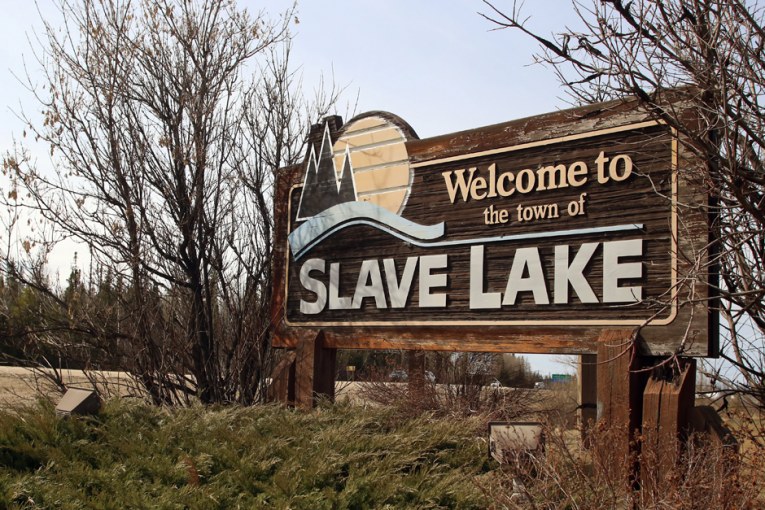
Just 200 kilometres southwest of the Fort McMurray oilsands hub in northern Alberta, investors are rushing to secure rights to land that produces crude at much lower costs than the massive operations the region’s known for. That’s because beneath the area’s characteristic oil-rich soil, which requires expensive extraction and refining techniques, there’s crude trapped between layers of rock that can be pumped with conventional gear.
“It’s definitely an emerging play,” said Roger Tang, chief executive officer Deltastream Energy Corp., one of the companies that’s producing oil in the area. “It’s new and the production is quite respectable at this price.”
The race to acquire drilling rights near the remote Slave Lake community comes as development of Canada’s oilsands, the world’s third-largest crude reserves, grinds to a near halt with prices too low to justify the billions of dollars required to build new mines or steam-assisted production sites.
Located roughly between Alberta’s Nipisi Lake and an area called Marten Hills, the drilling rights going for sale fall within the Clearwater shale and sandstone formation, with pockets of oil 600 to 700 meters (1,970-2,300 feet) below the ground, Tang said. Crude from the area can be produced for about $10 a barrel.
The purchases have been flying under the radar because most of the buyers are closely held companies like Deltastream, which aren’t required to disclose what they’re up to like listed companies. But one purchase recently stood out.
Under the name Stomp Energy Ltd., the land company Scott Land & Lease Ltd. paid $10.15 million, or $1,101 per hectare, in a Sept. 13 provincial land offering for the rights to explore for hydrocarbons near Marten Hills for 15 years, along the far western edge of the Athabasca Oil Sands region.
While that may seem like very little when compared to the prohibitive prices paid for rights in the Permian Basin in Texas, it was the most paid for a single section of exploration land in Alberta since December 2011, provincial data show. And it came amid a flurry of other purchases in the same area by other companies.
Companies including Deltastream, Cenovus Energy Inc. and Spur Petroleum Ltd. have begun drilling in the area over the past year.
Cenovus controls about a third of the play after acquiring drilling rights in the area over recent years, Harbir Chhina, executive vice president of oil-sands development, said in a conference call last June. While Cenovus has drilled a well in the area that produces about 300 barrels a day and plans to drill four or five wells in total, the company lists Marten Hills as a potential divestiture as it seeks to sell $4 billion to $5 billion by year end to help cover the cost of buying oilsands assets from ConocoPhillips.
“We continue to assess what our drilling plans may look like for this property in the coming months,” Reg Curren, a Cenovus spokesman, said in an email. “No decision has been made at this time.”
Backed by a $100 million equity line of credit led by ARC Financial Corp. and Wells Fargo & Co., Calgary-based Deltastream has drilled nine wells there since the second quarter, three of which are producing between 150 and 200 barrels a day, Tang said. The company plans to continue drilling new wells into next year.
The advent of multilateral drilling, in which multiple bores are drilled out of a single well hole, has made exploiting the Clearwater formation economically viable, Tang said. Each well costs $1.1 million to $1.5 million to drill and produces as much as four times more crude as a conventional horizontal well, he said. That makes the play viable at today’s oil price of just over US$50 a barrel, Tang said. By contrast, wells in Alberta’s Duvernay Formation cost $6 million to $7 million.
Land companies such as Scott typically buy rights in oil-sands areas on behalf of energy producers who want to shield their names from the transaction. Scott declined to comment on the purchase when contacted by phone.
In addition to Scott and Deltastream, Synergy Land Services Ltd. also bought rights to a plot during the Sept. 13 bidding round. It payed $1,571 per hectare, the most per hectare in the province in more than two years. In July, land company Britt Resources Ltd. paid $2.99 million for three parcels in the same immediate area, and Scott bought three parcels nearby for $4.97 million in June of last year.
The drilling rights sales “show you that quiet acquisitions can get hot very quickly,” said Mark Oberstoetter, lead analyst for upstream research at Wood Mackenzie in Calgary.
But development of the Clearwater formation in the Marten Hills area is in its infancy and its full potential won’t be known until more drilling takes place, Tang said. The Lesser Slave Lake River area that includes Marten Hills pumped just 1.46 million barrels in all of 2015, according to the most recent Alberta government data. But Tang says he’s optimistic.
Well results are “looking very good,” he said. “Although it’s still early stage, you get some indication that it’s very exciting.”
Bloomberg News
You can read more of the news on source
